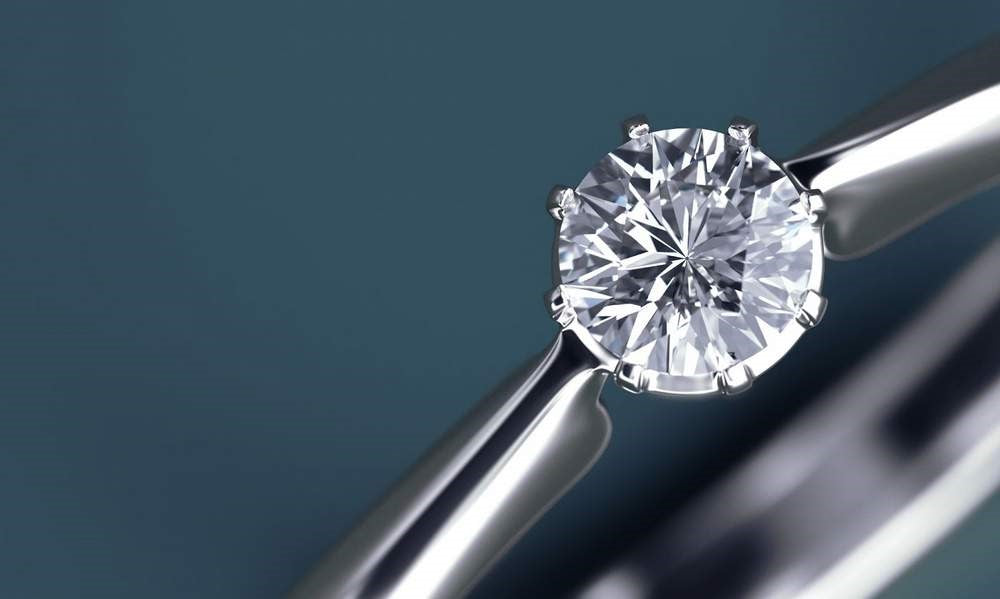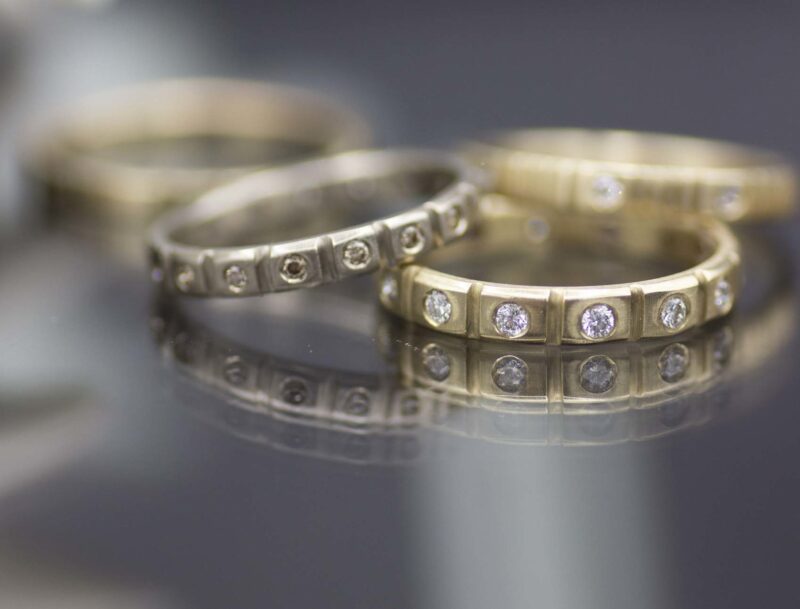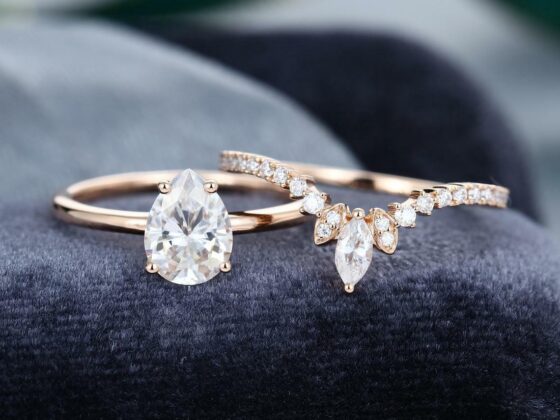When it comes to choosing an engagement ring, couples have traditionally had two choices – mined diamonds or synthetic ones. But now, thanks to advances in technology, there’s a third option: lab-grown diamond engagement rings.
These rings combine ethics and aesthetics in equal measure – providing the beauty of a traditional diamond but without any of the ethical implications associated with mining. This article explores this exciting new trend and how lab-grown diamonds are revolutionizing the jewelry industry.
The Rise of Lab-Grown Diamond Engagement Rings
In recent years, the trend of lab diamond engagement rings has taken off. As couples increasingly make ethical decisions about what to buy for their special day, lab-grown diamonds are emerging as a popular option. Not only do they offer the same beauty and sparkle that natural diamonds provide, but they also come with fewer environmental concerns than traditional mining operations. The rise of these rings is due to both ethical considerations and aesthetic appeal.
On one hand, people are more conscious than ever before when it comes to making sustainable choices in their purchases – especially those with long-term implications like an engagement ring. Lab-grown diamonds provide an alternative that is conflict-free and eco-friendly while maintaining all the qualities sought after in a diamond: brilliance, clarity, and durability. On the other hand, there’s nothing wrong with wanting something beautiful or luxurious either! Lab-grown diamonds have become increasingly popular for those who want something unique yet still timeless – something that will be appreciated not just on the wedding day but on many anniversaries to follow!
Whether youre looking for a classic solitaire or a vintage halo setting surrounded by smaller stones – every couple can find something stunning that meets both their practical needs as well as their personal style preferences. Lab-grown diamond engagement rings have become much more than just another way of getting engaged; they represent an intersection between ethics and aesthetics – allowing us to choose love without sacrificing our values or compromising our sense of style!
Exploring the Benefits and Drawbacks of Lab-Grown Diamonds

Lab-grown diamonds have gained immense popularity in recent years among individuals looking for an ethical and aesthetically pleasing alternative to mined diamonds. As with any product, there are both benefits and drawbacks associated with lab-grown diamonds. This article will explore the various advantages and disadvantages of opting for a lab-grown diamond engagement ring when making such an important purchase decision.
First, let’s look at the positives associated with choosing a laboratory-created diamond over its mined counterpart: Lab-grown diamonds typically come at a lower cost than their naturally occurring counterparts due to their efficient production process; they can also be more easily available as they are not subject to the same supply and demand fluctuations that influence prices of mined stones; moreover, these manmade gems tend to have excellent clarity ratings compared to those found in nature. Additionally, many people prefer them because they feel good about purchasing something created without harming the environment – thus avoiding potential human rights violations or endangering species resulting from mining processes.
On the other hand, some may find it difficult to distinguish between natural and synthetic stones since these two options look almost identical when viewed under magnification – hence buyers should take caution when selecting a lab-grown gemstone as even small flaws can affect its overall value significantly. Furthermore, despite being made artificially, most lab-produced diamonds cannot match the quality of truly rare pieces found only in nature; additionally, resale values often remain unimpressive due to a lack of recognition among traditional jewelers who favor mined jewels over their synthesized equivalents.
Overall, while opting for a laboratory diamond might seem ideal from both an ethical and financial point of view – one must weigh all possible pros and cons before settling on this option for their engagement rings or any other jewelry item requiring such significant investment decisions.
An In-Depth Look at the Environmental Impacts of Cultured Diamonds
Cultured diamonds have become increasingly popular in recent years, as they offer the same sparkle and beauty as mined diamonds with a fraction of the environmental impact. But just how much less damaging are cultured diamonds compared to their natural counterparts? This article takes an in-depth look at the environmental impacts of cultured diamonds, examining both sides of this debate. The first step is to consider where cultured diamonds come from. Unlike mined stones, which are extracted from deep underground mines, lab-grown gems are created in controlled laboratory environments using advanced technology such as chemical vapor deposition (CVD) or high pressure–high temperature (HPHT).
As a result, no digging or blasting is required for these stones—a process that can be incredibly harmful to ecosystems and wildlife habitats near mining sites. It’s also worth noting that regardless of whether it’s mined or grown in a lab, every diamond has its unique carbon footprint associated with its production and transport. In terms of energy usage alone, many studies suggest that on average it requires around 30 gigajoules (GJ) per carat for HPHT creation while CVD only needs approximately 4 GJ per carat—a substantial difference when thinking about sustainability goals over time.
However, there’s still more work to be done when it comes to measuring the exact amount each type contributes towards climate change overall; research conducted by scientists at MIT found that even though diamond production may not require traditional mining operations like other industries do—such as oil extraction—it still emits large amounts of gases into the atmosphere due mainly to electricity consumption during manufacturing processes.
For example, nitrogen oxides can form smog if emitted without control mechanisms being put into place beforehand. In conclusion then: although cultured diamonds play an important role within sustainable fashion since they do not need any traditional mining practices yet still provide stunning gemstones for those looking for ethical engagement rings; further research should be undertaken before we can definitively say one type has significantly lower environmental impacts than others – especially when considering long term effects on global warming via gas emissions released during manufacture itself!
Navigating Ethical Considerations When Choosing a Lab-Grown Ring

When it comes to choosing a lab-grown ring for your engagement, it is important to consider the ethical implications that come with the decision. Many of these rings are made from mined diamonds, which can often have a negative environmental and social impact. On the other hand, laboratory-grown diamonds come with fewer ethical concerns due to their limited resource consumption and lack of human labor exploitation during production.
However, there are still many factors that should be taken into consideration when navigating this choice. The first step in making an ethically conscious decision is researching where exactly your diamond was sourced from. If possible, determine whether or not the company has any traceability practices in place to ensure they’re sourcing responsibly and fairly produced materials. Additionally, investigate if they adhere to any industry standards such as Kimberley Process Certification which promises buyers transparent knowledge about diamond sources while prohibiting conflict diamonds from entering legitimate markets worldwide.
Another factor worth considering is how much waste material is generated during production processes—for example, some labs may use more energy than others or require additional chemicals for cleaning purposes that could potentially harm surrounding ecosystems if not disposed of properly. Researching options available will help you make an informed decision based on what’s most important for you personally when selecting a lab-grown ring option without compromising either aesthetics or ethics alike!


